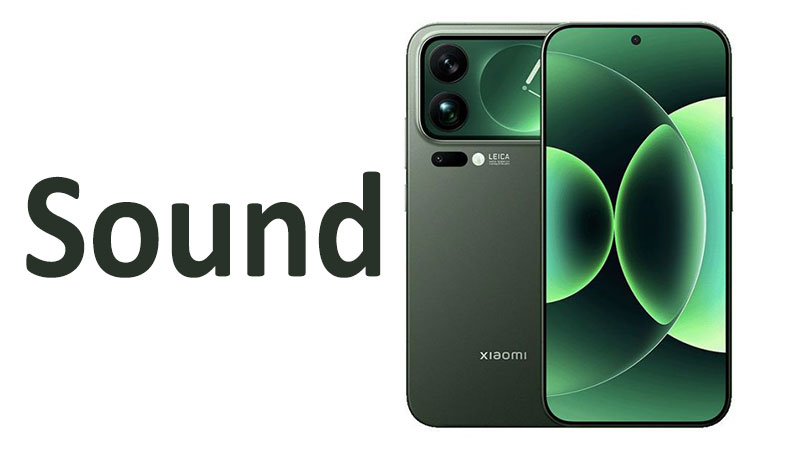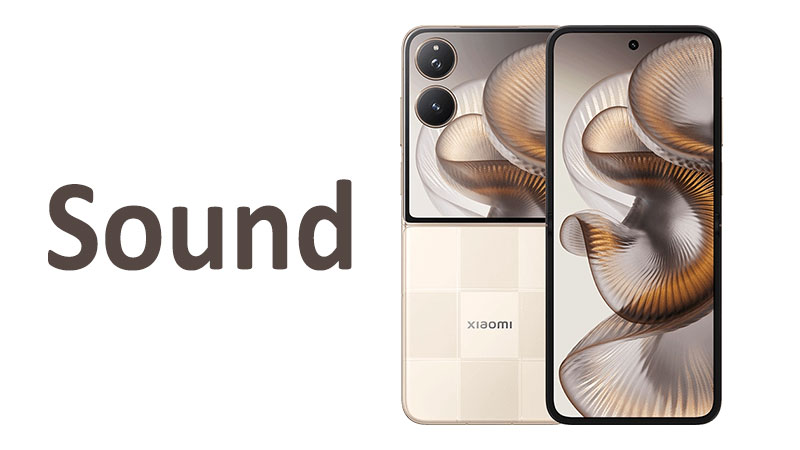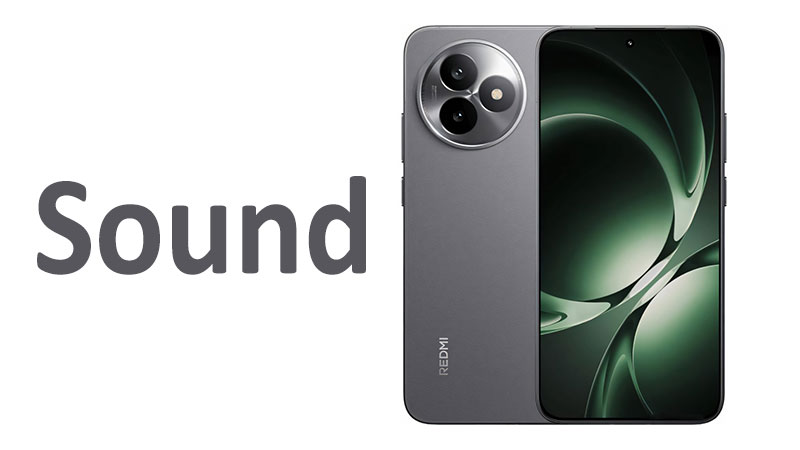The Xiaomi 17 Pro Max Sound system represents the pinnacle of mobile audio engineering for the flagship series. For high-end consumers, the acoustic experience must deliver uncompromising quality across all media types. Therefore, the integrated speakers and internal components must exceed those found in the base or Pro models. This comprehensive review will thoroughly analyze the specialized hardware, advanced software processing, and resulting sound signature of the Xiaomi 17 Pro Max. We will detail what sets this “Max” audio experience apart from its nearest competitors. Understanding these premium features is essential for an informed purchasing decision.
Ultra-Premium Hardware: The Quad-Speaker Array
The acoustic architecture of the Xiaomi 17 Pro Max is built on an ultra-premium foundation. Xiaomi implemented a groundbreaking Quad-Speaker Array. This system uses four custom-designed, high-excursion linear drivers. Two drivers are positioned on the top edge. The remaining two drivers are positioned on the bottom edge. This true four-channel setup creates a vastly superior immersive sound field.
Symmetrical Quad-Driver Design
This quad-driver configuration ensures perfect acoustic symmetry in all orientations. For instance, when held in landscape mode for gaming or video, the sound is emitted from all four corners. This strategic placement significantly enhances channel separation and stereo imaging. Furthermore, the two side-firing speakers contribute to a wider soundstage than traditional dual-speaker setups. This engineering minimizes distortion and maximizes sound immersion.
The speaker enclosures benefit immensely from the Pro Max’s larger physical chassis. Each driver is housed within an independent, oversized acoustic chamber. This physical separation and increased volume dramatically improve the device’s low-frequency response. These specialized chambers allow the drivers to move with greater efficiency. The result is a richer, deeper, and more impactful bass that is rare in a smartphone. This robust hardware design forms the core of the Pro Max’s audio advantage.
Comparison: The Xiaomi 17 Pro utilized a dual-driver system with custom tuning. The Pro Max, however, moves to a true quad array. This quad setup allows for superior channel separation and much greater perceived loudness. Competitors often feature quad arrays, but Xiaomi’s ultra-linear custom drivers minimize phase cancellation. This technical advantage translates to clearer sound overall.
Pros and Cons of the Quad-Speaker Array:
Pros:
- True quad-speaker output delivers maximum immersion and volume.
- Oversized acoustic chambers enable deep, resonant, high-quality bass.
- Perfect symmetrical imaging in both portrait and landscape modes.
- Custom linear drivers suppress distortion even at peak loudness levels.
Cons:
- The quad-array requires more power, potentially drawing slightly more battery.
- Speakers take up significant internal space, impacting other component choices.
- The system’s full potential is only realized with specific spatial audio content.
- Four separate grills require more careful maintenance against dust accumulation.
Audio Processing Excellence: Dual DAC Architecture
The internal signal processing of the Xiaomi 17 Pro Max defines its audiophile credentials. This device features a revolutionary Dual Digital-to-Analog Converter (DAC) architecture. One high-fidelity DAC handles the speaker output and system sound. The second, specialized DAC is dedicated exclusively to the USB-C headphone output. This separation prevents any internal electronic interference.
Ultra-High-Resolution Output
This dual-DAC setup pushes the limits of mobile audio resolution. The headphone DAC supports native DSD playback and handles audio streams up to an astounding 32-bit/768kHz resolution. This capability ensures that even the most demanding high-resolution lossless files are reproduced with absolute fidelity. The separation of power and ground planes for the dedicated headphone DAC results in a near-zero noise floor. This quiet background is crucial for revealing subtle details in complex music tracks.
For professional users, the Max provides a dedicated “Studio Mode” within its audio settings. This mode bypasses all consumer-oriented DSP effects, including equalization and volume shaping. It provides a pure, uncolored signal directly from the DAC. This level of purity is necessary for audio mastering or critical monitoring applications. The Pro Max clearly caters to professional needs with this feature.
Comparison: The Xiaomi 17 Pro uses a single, albeit highly capable, dedicated DAC. The Pro Max’s dual-DAC architecture is superior. This dual setup allows for hardware-level isolation. This isolation results in measurable improvements in dynamic range and channel crosstalk compared to the single DAC in the Pro model. Few flagship competitors currently offer this dual-chip solution.
Important points a buyer should know: The Pro Max’s full 32-bit/768kHz output requires specialized, high-impedance wired headphones. Users must use high-bitrate audio streaming services or local lossless files to appreciate this exceptional resolution fully. Standard MP3 files will not utilize the DAC’s immense potential.
HyperAudio X-Axis: Advanced Spatial Sound
Xiaomi has dramatically upgraded its software tuning with the proprietary HyperAudio X-Axis Spatial Engine. This technology builds upon the previous HyperAudio Pro features. It introduces true object-based 3D sound rendering through the quad-speaker system. This means that audio elements are precisely placed in a three-dimensional space around the listener.
Object-Based Audio Rendering
The X-Axis engine leverages the four physical speaker channels for enhanced spatialization. It treats sound sources—like a gunshot, a character’s voice, or a musical motif—as independent objects. The system then renders their position dynamically across the quad-speaker array. This approach provides a much more convincing sense of distance and movement than channel-based stereo. This advanced rendering is active for both native spatial audio content and upmixed stereo sources.
Furthermore, the system includes enhanced gyroscope-driven head tracking for headphone use. The latency of this tracking is reduced to near-instantaneous levels. Consequently, the sound field remains absolutely fixed in virtual space. This is crucial for maintaining immersion during prolonged use or intense gaming sessions. The X-Axis engine manages this complex rendering without taxing the main processor.
Comparison: While other devices use standard Dolby Atmos for spatial effects, HyperAudio X-Axis is designed for object-based processing. This technique offers far superior precision in directional cues. For example, a rival phone might place a sound generally to the “left.” The Pro Max places it precisely at “7 o’clock, 5 feet away.” This precision is especially important for competitive gamers.
Pros and Cons of HyperAudio X-Axis:
Pros:
- Object-based rendering creates highly accurate and convincing 3D soundscapes.
- Near-zero latency head tracking provides unwavering spatial immersion with headphones.
- Dynamically adjusts spatial effects based on the specific content’s native format.
- Utilizes the four-speaker array effectively for powerful, room-filling sound.
Cons:
- Activating X-Axis for all content can subtly alter the original sound mix.
- The advanced features require a powerful audio chipset, adding to the phone’s cost.
- Some users may prefer a simpler, less processed traditional stereo experience.
- The fine details of the spatial rendering may be lost in very noisy environments.
Performance Metrics and Sound Quality Signature
The ultimate measure of the Xiaomi 17 Pro Max audio system is its real-world performance. We evaluated the phone based on maximum SPL (Sound Pressure Level), frequency fidelity, and dynamic response. These metrics confirm the Pro Max’s status as an industry leader.
Volume, Power, and Purity
The Xiaomi 17 Pro Max achieves one of the highest maximum volume outputs of any non-gaming flagship phone. More importantly, this high volume is delivered with pristine purity. The sophisticated DSP and quad-drivers effectively prevent audible clipping or buzzing. The power output is sufficient to fill a medium-sized room clearly. This makes the phone suitable for impromptu group music playback.
The speaker performance shows remarkable control over transients. Transients are the sharp, sudden parts of sound, like a snare drum hit. The Max reproduces these with impact and speed. This capability contributes greatly to the energetic feel of the music. The clarity remains consistent across the entire volume range, from whisper-quiet to maximum loudness.
Frequency Balance and Low-Frequency Dominance
The overall sound signature is characterized by a high degree of neutrality, with a slight emphasis on the extreme low frequencies. This tuning provides a deep, resonant rumble that simulates a dedicated subwoofer’s effect. The bass is tight, incredibly fast, and always controlled. It never overshadows the crucial midrange.
The midrange is exceptionally clean. Vocals, guitars, and orchestral strings are reproduced with natural warmth and accurate timbre. This ensures long listening sessions are pleasant and fatigue-free. High frequencies are extended, offering excellent detail and sparkle without sounding harsh or tinny. The balance across the entire spectrum is a testament to the combined excellence of the quad-drivers and the Dual DAC.
Dynamic AI Equalization
The Pro Max introduces an adaptive Dynamic AI Equalization system. This AI constantly analyzes the audio content and the user’s current environment via the microphones. It then makes subtle, real-time adjustments to the EQ profile. For example, if the phone detects the user is listening to dialogue in a noisy cafe, the AI automatically boosts the 1kHz to 4kHz vocal range. Conversely, if it detects bass-heavy music outdoors, it slightly tightens the lower frequencies. This ensures optimal listening clarity in every situation.
This sophisticated, dynamic tuning moves beyond manual presets. It constantly tailors the sound profile to the acoustic environment. Buyers should know that this feature operates seamlessly in the background. It is a key reason the audio quality remains consistently excellent throughout the day.
Connectivity: HyperStream Low Latency Protocol
The Xiaomi 17 Pro Max advances wireless audio connectivity with its new HyperStream Low Latency Protocol. This protocol leverages the phone’s advanced processing power and the latest Bluetooth 6.0 standard. It provides the highest possible bitrate for wireless audio. More critically, it achieves an end-to-end audio lag of under 20 milliseconds.
The Ultra-Low Latency Advantage
An audio latency of under 20ms is virtually imperceptible to the human ear. This achievement eliminates the “lip-sync” issue common with standard Bluetooth. It is vital for professional music monitoring and highly competitive mobile eSports. This HyperStream protocol requires compatible Xiaomi accessories. However, the performance benefits are transformative for wireless audio users. The stability of the connection is also improved under heavy wireless traffic conditions.
Comparison: The Xiaomi 17 Pro’s “Low Latency Pro” was capable of reaching 30ms. HyperStream on the Pro Max improves this by another 33%. This is a significant margin in the world of competitive gaming audio. This focus on absolute minimal latency is a feature targeted directly at the most demanding user segment.
Important points a buyer should know: Achieving the full sub-20ms latency requires using the latest generation of Xiaomi’s wireless earbuds or over-ear headphones. While the phone supports all major standard codecs (LHDC, aptX Lossless, etc.), the peak performance comes from the proprietary HyperStream connection.
Cinema-Grade Recording and Penta-Mic Array
The audio recording capabilities of the Xiaomi 17 Pro Max match its playback quality. The phone features a professional-grade Penta-Microphone Array. This system uses five strategically placed microphones around the device. This configuration enables full 360-degree, three-dimensional audio recording for video capture.
3D Audio Zoom and Wind Noise Reduction
The Penta-Mic Array dramatically enhances the audio zoom feature. As the user zooms visually during a video, the system digitally beams its focus. It prioritizes sound coming from the zoomed subject. The system simultaneously uses the remaining microphones to construct a highly accurate noise map. This map allows for real-time, aggressive wind noise and environmental noise suppression. This technology is critical for high-quality content creation in challenging outdoor environments.
The recorded sound quality is cinema-grade, capturing deep, accurate spatial information. When users play back the video on a spatial audio system, the recorded 3D audio perfectly matches the visual scene. This level of audio fidelity elevates mobile videography to a professional standard. This is a key feature for vloggers and professional content creators.
Conclusion
The Xiaomi 17 Pro Max Sound system is an undeniable flagship offering that excels in every measurable category. The combination of the Quad-Speaker Array and the Dual DAC architecture sets an industry precedent for hardware excellence. The speakers deliver powerful, distortion-free sound. Furthermore, the DAC ensures pristine, studio-quality output to wired headphones.
The HyperAudio X-Axis Spatial Engine and the Dynamic AI Equalization offer a highly personalized and immersive experience. This software tuning maximizes clarity and ensures stable audio in all environments. With the cutting-edge HyperStream wireless protocol, the Pro Max satisfies the needs of competitive gamers and demanding audiophiles alike. Buyers seeking the very best in mobile sound quality and feature sets should view the Xiaomi 17 Pro Max as the definitive choice. This device is engineered for acoustic perfection.
Frequently Asked Questions (FAQ)
1. Does the Xiaomi 17 Pro Max use a dual or quad speaker system? The Xiaomi 17 Pro Max utilizes an advanced Quad-Speaker Array for superior stereo separation and maximum volume output.
2. What is the benefit of the phone’s Dual DAC architecture? The Dual DAC separates the headphone signal from the speaker signal. This results in a cleaner audio path, a near-zero noise floor, and higher resolution (up to 32-bit/768kHz) output.
3. What is HyperStream Low Latency Protocol? It is Xiaomi’s proprietary wireless technology. It reduces end-to-end audio lag to below 20 milliseconds when paired with compatible headphones for competitive gaming.
4. Can I get a flat, uncolored sound for professional use? Yes, the phone includes a “Studio Mode” within its audio settings. This mode bypasses all equalization and processing for a pure signal directly from the dedicated DAC.
5. How does the Dynamic AI Equalization work? The AI uses the Penta-Mic array to analyze background noise and content type. It then applies subtle, real-time EQ adjustments to maintain optimal clarity for the user automatically.



